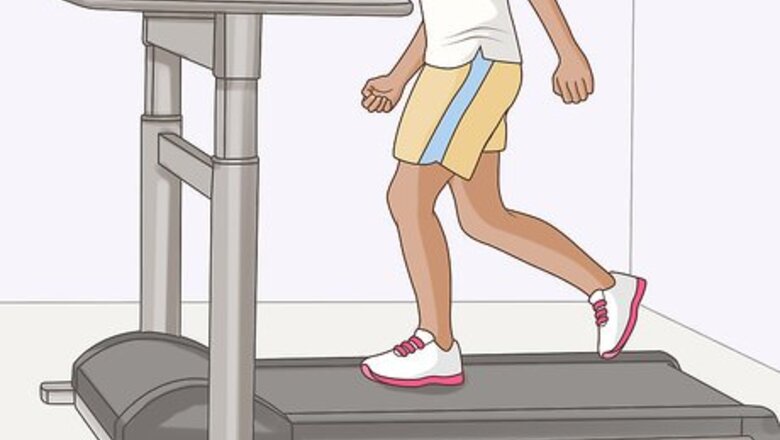
views
Exercise and wellness specialist Souad Gharib says to “lift weights and do cardio…30-40 minutes each day, 4-5 times a week” to get in shape. Eating a healthy diet by focusing on protein, grains, fruits and vegetables, and dairy helps you get in shape, too.
Exercising Smarter
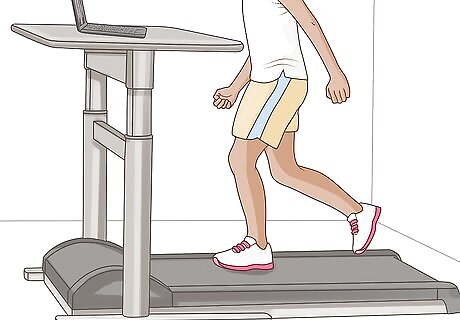
Get active. If you must sit at school and/or work, then move your legs and body about, but not constantly like a pendulum. Get up and go to the pencil sharpener, if possible. Step outside during your lunch break or walk to get a drink of water. If you want to get in shape but you’re too busy to hit the gym, you need to at least get yourself up and active. Walk. Park on the far side of the parking area. There are lots of ways to do such things, and they don’t need to be very time consuming or costly at all. Make a point of taking the stairs rather than an elevator when going home or to work (split between stairs and elevator if you need to go up very high). Get a standing or treadmill desk, or use an exercise ball instead of a desk chair. Go ahead, listen to your favorite TV shows -- but don’t just sit there watching. Cook, fold laundry, empty the dishwasher or ride a stationary bike. Do a step routine/step up/step down (repeatedly) for a good while. Do squats while waiting for your food to cook. Walk around on your tiptoes, in a duck posture or in a semi-squatting position.

Do aerobic exercise. Aerobic exercises are those that get your heart-rate up the most. They will improve your body’s ability to handle physical exertion and make you healthier. Aerobic exercises will help you lose any weight, if that is your goal but exercising like this will be absolutely required, if you want to get in shape. You can bike, which is a great way to work out and get yourself outside. Try jogging or speed walking, either of which is an easy exercise to take up and is free! You can swim, which is a great way to work out your whole body.

Be consistent! If you want to get in shape, you will need to get in some activity at least every other day. You can’t expect results when you exercise inconsistently and infrequently. Have a plan and follow it. Don't try to work out every day of the week. You should have at least 2 or 3 rest days total per week. Give your body time to rest and build muscle! Your resting time is essential. EXPERT TIP Laila Ajani Laila Ajani Fitness Trainer Laila Ajani is a Fitness Trainer and founder of Push Personal Fitness, a personal training organization based in the San Francisco Bay Area. With over 10 years as a trainer and exercise specialist, Laila has expertise in competitive athletics (gymnastics, powerlifting, and tennis), personal training, distance running, and Olympic lifting. Laila is certified by the National Strength & Conditioning Association (NSCA), USA Powerlifting (USAPL), and she is a Corrective Exercise Specialist (CES). Laila Ajani Laila Ajani Fitness Trainer Make a set schedule for yourself to help stay on track. Setting up a schedule in your calendar is probably the most efficient way to maintain consistency in your workout routine. Try planning 3 lifting days and 3 cardio days each week, for instance. However, be gentle with yourself if you miss a day for some reason—it's better to only do one or two workouts in a week rather than abandon it altogether.
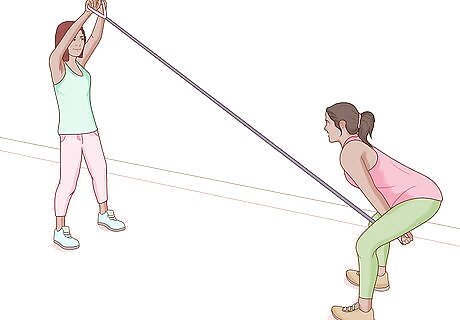
Find a partner! Studies show if you have someone else pushing you and doing the exercises with you, then it's going to be easier to stay on track.
Eating Well
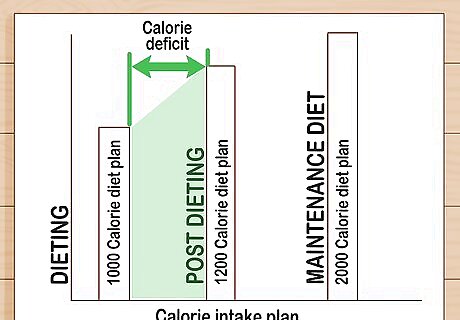
Create a calorie deficit. To lose weight while getting in shape, you will need to create a calorie shortfall. This means that you will eat fewer calories than are needed to maintain your weight, causing your body to begin burning fat. Calculate how many calories you need to maintain your weight and then plan how many calories you can eat in a day (usually 2,000 calories a day). EXPERT TIP Laila Ajani Laila Ajani Fitness Trainer Laila Ajani is a Fitness Trainer and founder of Push Personal Fitness, a personal training organization based in the San Francisco Bay Area. With over 10 years as a trainer and exercise specialist, Laila has expertise in competitive athletics (gymnastics, powerlifting, and tennis), personal training, distance running, and Olympic lifting. Laila is certified by the National Strength & Conditioning Association (NSCA), USA Powerlifting (USAPL), and she is a Corrective Exercise Specialist (CES). Laila Ajani Laila Ajani Fitness Trainer Losing weight without regular exercise is possible. To lose weight, you must control your caloric intake. It's a crucial step you can't skip. Ensure that your diet is well-balanced and contains foods that are low in calories and high in nutrition. Additionally, try increasing your daily physical activity to burn more calories.

Cut sugar, salt, and unhealthy fats from your diet. Sugar, salt, and unhealthy fats will contribute to keeping you from getting in shape. Avoid sugary drinks like soda, and anything which is high in saturated or trans fats (partially hardened or hardened fats, margarine). Instead, eat fruit as a dessert and foods with healthy fats like omega-3’s (found most easily in fish, olive oil and nuts).
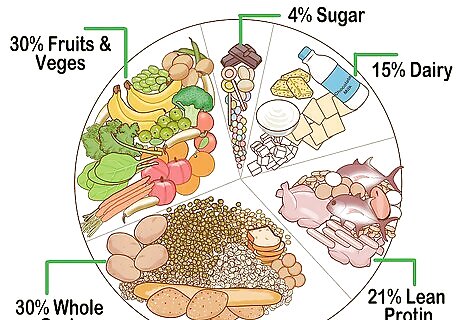
Eat balanced meals. You will need to eat a proper balance of protein, carbohydrates (found grains), fruits and vegetables, and dairy. Whole grains might comprise about 30% of the food you eat (if grains are not inflammatory for you), fruits and vegetables another 30% (weighted more towards vegetables), dairy 15%, very lean protein 15% or up to 40%, if you lower the calories from carbohydrates. Lower unhealthy fats, processed carbs and sugar to no more than 4% of you diet. There are different types of fats. Some are good for you, while others are not. You should avoid trans fats (found in many commercially baked and snack foods) and limit saturated fats (ground meats, sausages, wieners, fried foods and butter). However, monounsaturated fats (olive oil, avocados) and polyunsaturated fats (fish, walnuts) are good for you. Good whole grains include whole wheat, whole oats, quinoa and brown rice. Good fruits and vegetables include chickpeas/garbanzo beans (can be used to make hummus), beans, kale, broccoli, spinach, blueberries, strawberries, lemons and pears.
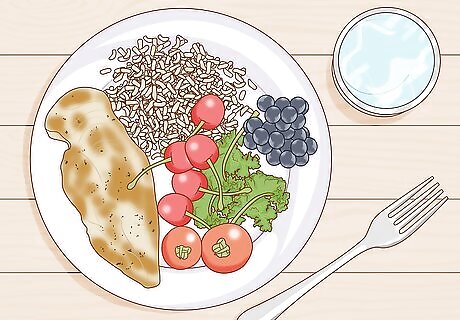
Eat properly portioned meals. Your meals should have reasonable portions to keep you from taking in more calories than you need. Be careful not to overfill your plate - use a smaller plate if you’re unsure. Drink a glass of water with your meal, and eat slowly in order to help your body feel full.
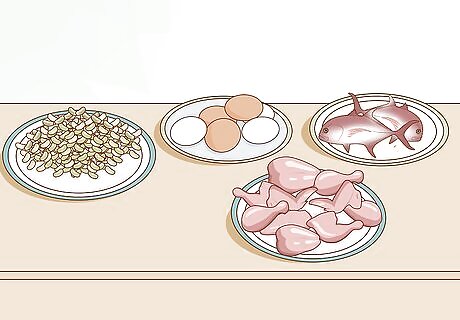
Focus on lean protein. Eating protein will help you to feel full and energetic. However, processed protein-heavy foods often contain lots of unhealthy fat. Eat lean proteins to reduce the amount of unhealthy fats in your diet. Use a little hard cheeses with low fat and low carbs. Examples of lean protein include chicken, turkey, fish, eggs, and lentils/beans.
Sample Diet and Exercise Plan
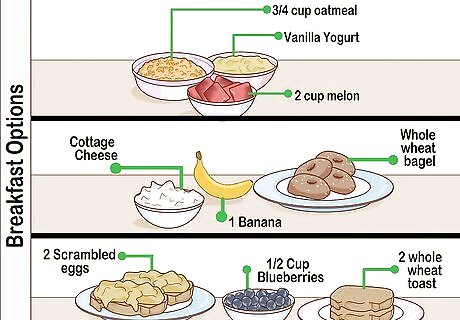
Eat breakfast. Balance protein, dairy and carbs in the morning for a natural energy boost. Alternate between these three example breakfast options: One cup of vanilla yogurt, 2 cups of melon, and ¾ cup cooked oatmeal. One cup of low-fat cottage cheese, one banana, and one whole-wheat bagel. Two scrambled eggs, ½ cup of blueberries, and 2 pieces of whole-wheat toast.
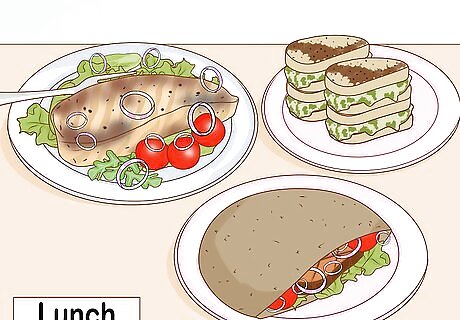
Eat lunch. Lunch is a great time to fit in protein (for an energy boost) and produce to keep you from feeling weighed down while you finish your day. Try alternating between these three example lunch options: Arugula salad with salmon, onions, and tomatoes. Use Italian dressing. Pita stuffed with chicken, tomatoes, carrots, cucumber, and feta. Rye bread sandwich with spinach, mozzarella, hummus, and tomatoes.

Eat dinner. Eat a small dinner and try to eat it further in advance of going to sleep (your body won’t be able to burn enough calories if you eat right before sleeping). Examples of healthy dinners include: Lemon pan-seared chicken, steamed broccoli, a side salad, and garlic mashed potatoes. Quinoa with bacon pieces, peas, and carrots with a side of steamed kale. Grilled salmon with roasted asparagus and spinach salad with cherry tomatoes, carrot slices, and vinaigrette dressing.
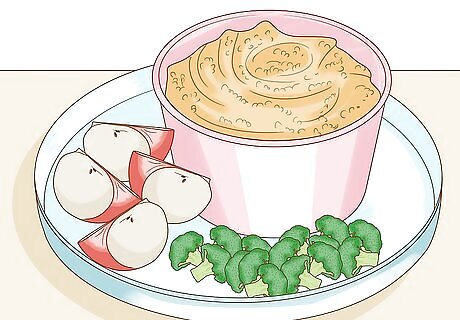
Eat light snacks. Eat one snack in between breakfast and lunch as well as between lunch and dinner. This will keep you from getting faint or hungry and will also help you not to overeat when it’s time for meals. Examples of healthy snacks include: Carrot and celery sticks. 1/4 cup hummus and 3 pieces of broccoli. Apple slices with a handful of almonds
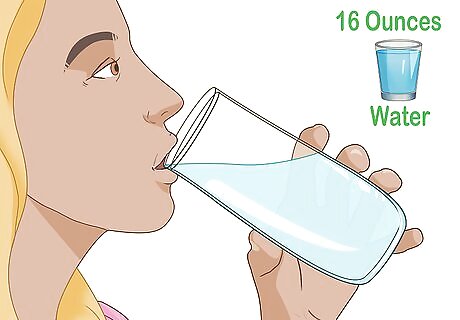
Drink water. Drink sixteen-ounces of water with every meal and at least once more during the day.
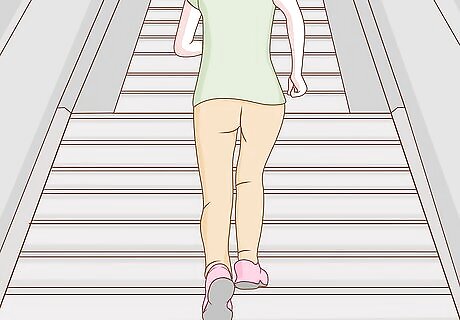
Get active. Take the stairs, stand when you work at your computer, and go for a walk around your building while you eat lunch.
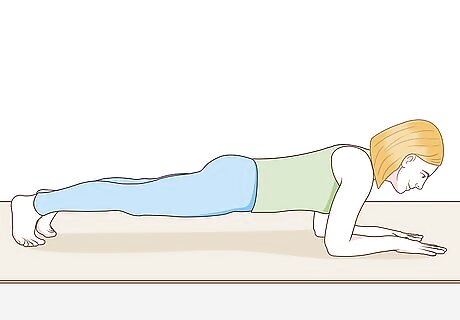
Exercise. Make it your goal to exercise with variety, for at least a total of one hour a day. This does not need to be all at once. When exercising, make sure you are getting your heart rate up for at least ten minutes at a time. Here are some example exercises (try to do all three every day): Do 2 minutes of planks, 4 minutes of jumping jacks, and 4 minutes of squats with thighs parallel to the floor (not deep squats), as soon as you get up. Do a few sets of as many push-ups you can do while keeping good form. If you have time before getting ready for work, go for a half hour fast walk or jog. Use a stationary or mobile bike for half an hour when you get home from work or school.










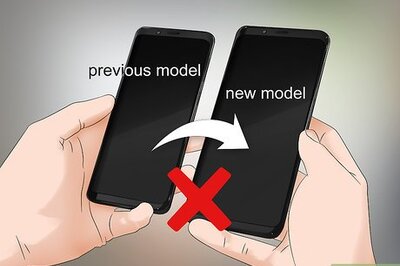
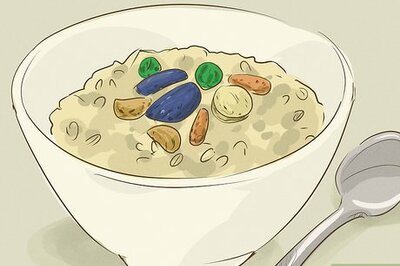

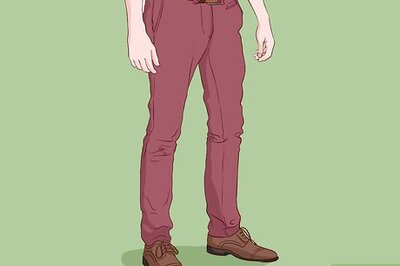




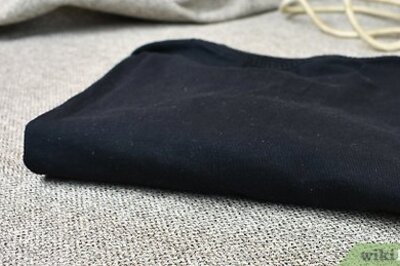
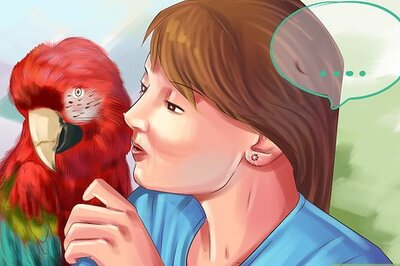
Comments
0 comment